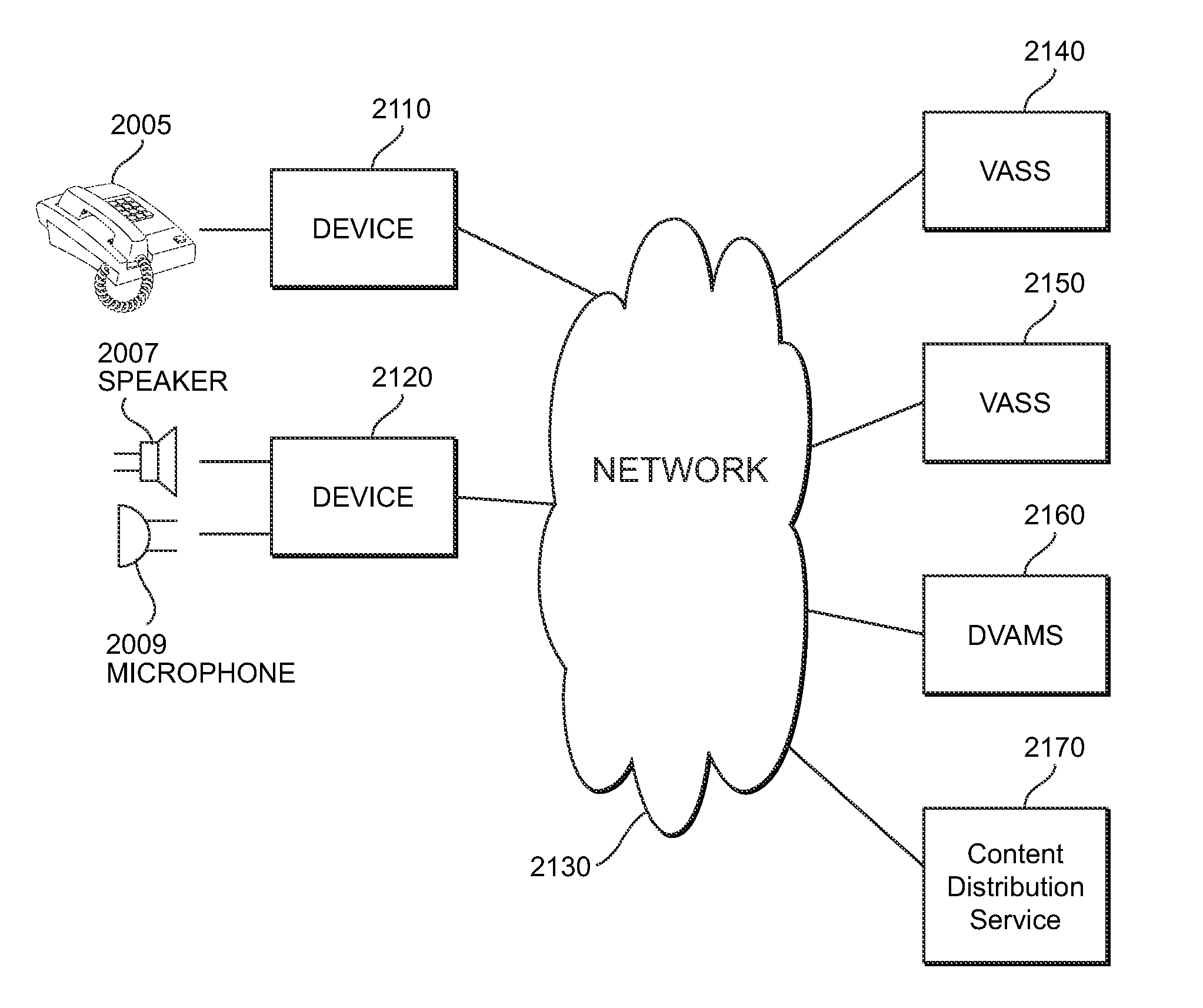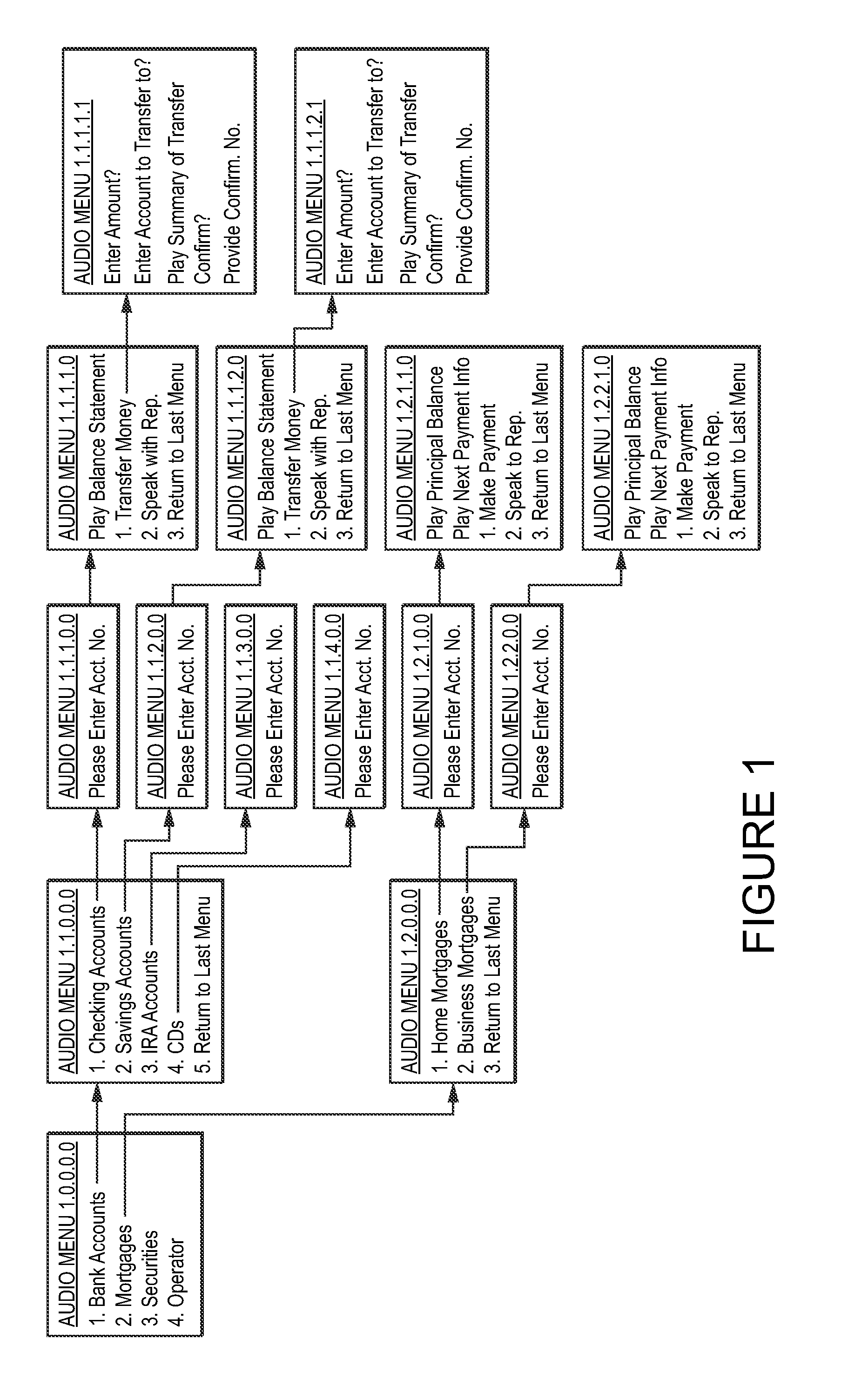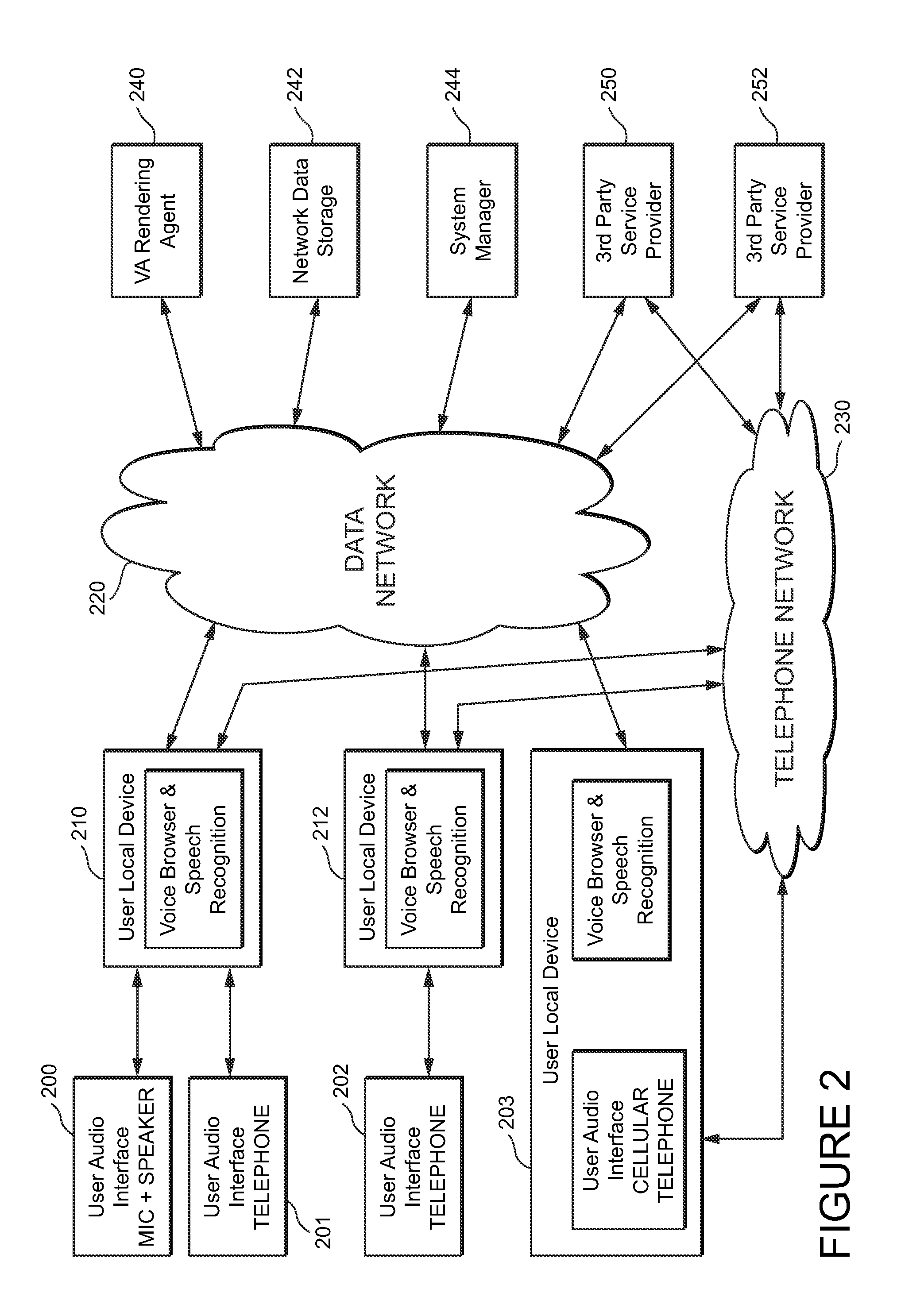System and method for displaying the history of a user's interaction with a voice application
a voice application and history technology, applied in the field of system and method for displaying the history of a user's interaction with a voice application, can solve the problems of time-consuming and frustrating process, difficult navigation through menus, and difficult for users to remember much of what came befor
- Summary
- Abstract
- Description
- Claims
- Application Information
AI Technical Summary
Benefits of technology
Problems solved by technology
Method used
Image
Examples
Embodiment Construction
[0036]The inventors have developed new systems and methods of delivering voice-based services to users which make use of some aspects of the basic architecture illustrated in FIG. 2. A full description of the systems and methods created by the inventors is provided in U.S. patent application Ser. No. 11 / 514,116, which was filed on Sep. 1, 2006.
[0037]The systems and methods created by the inventors are intended to provide users with speech and touch tone enabled Voice Applications for accessing various services and for performing various functions. In this respect, the systems, devices and methods embodying the invention serve some of the same functions as prior art centralized voice services platforms. The systems and methods can also be used to provide the same type of call forwarding discussed above, but at a lower cost, and with greater flexibility. In addition, the systems and methods created by the inventors make it possible to provide users with a whole host of additional call...
PUM
 Login to View More
Login to View More Abstract
Description
Claims
Application Information
 Login to View More
Login to View More - R&D
- Intellectual Property
- Life Sciences
- Materials
- Tech Scout
- Unparalleled Data Quality
- Higher Quality Content
- 60% Fewer Hallucinations
Browse by: Latest US Patents, China's latest patents, Technical Efficacy Thesaurus, Application Domain, Technology Topic, Popular Technical Reports.
© 2025 PatSnap. All rights reserved.Legal|Privacy policy|Modern Slavery Act Transparency Statement|Sitemap|About US| Contact US: help@patsnap.com



